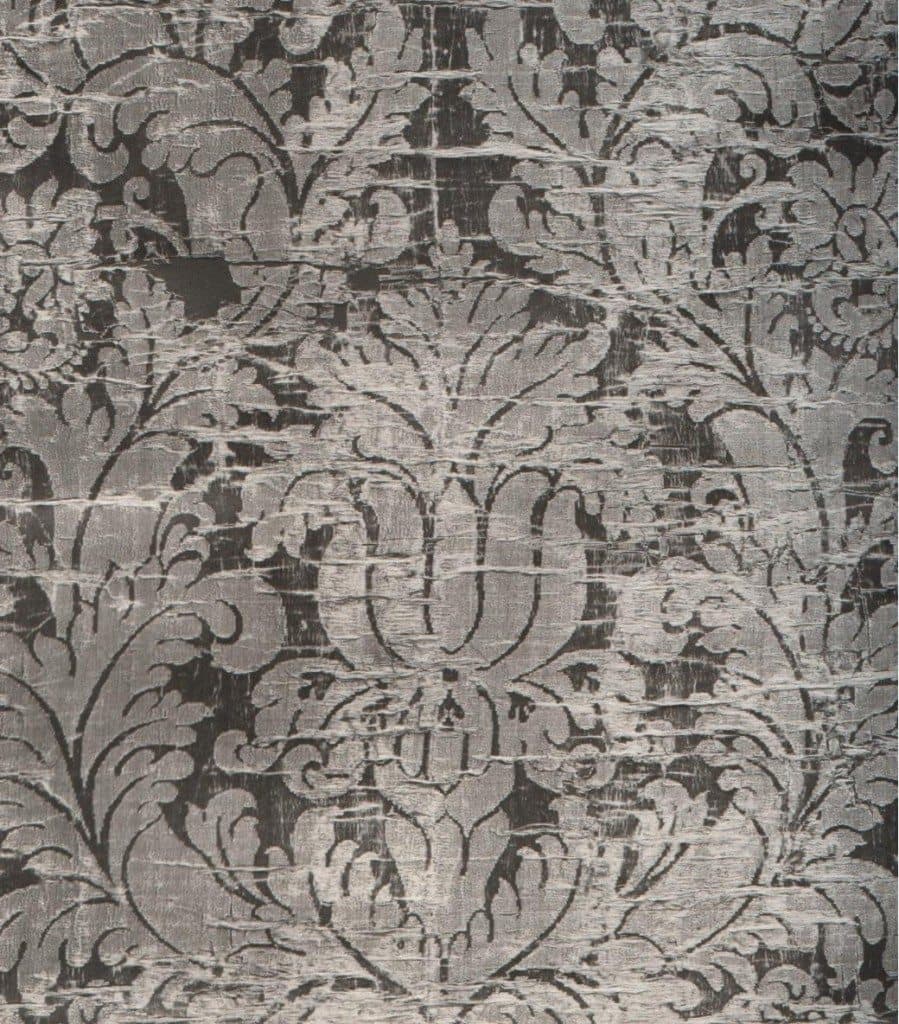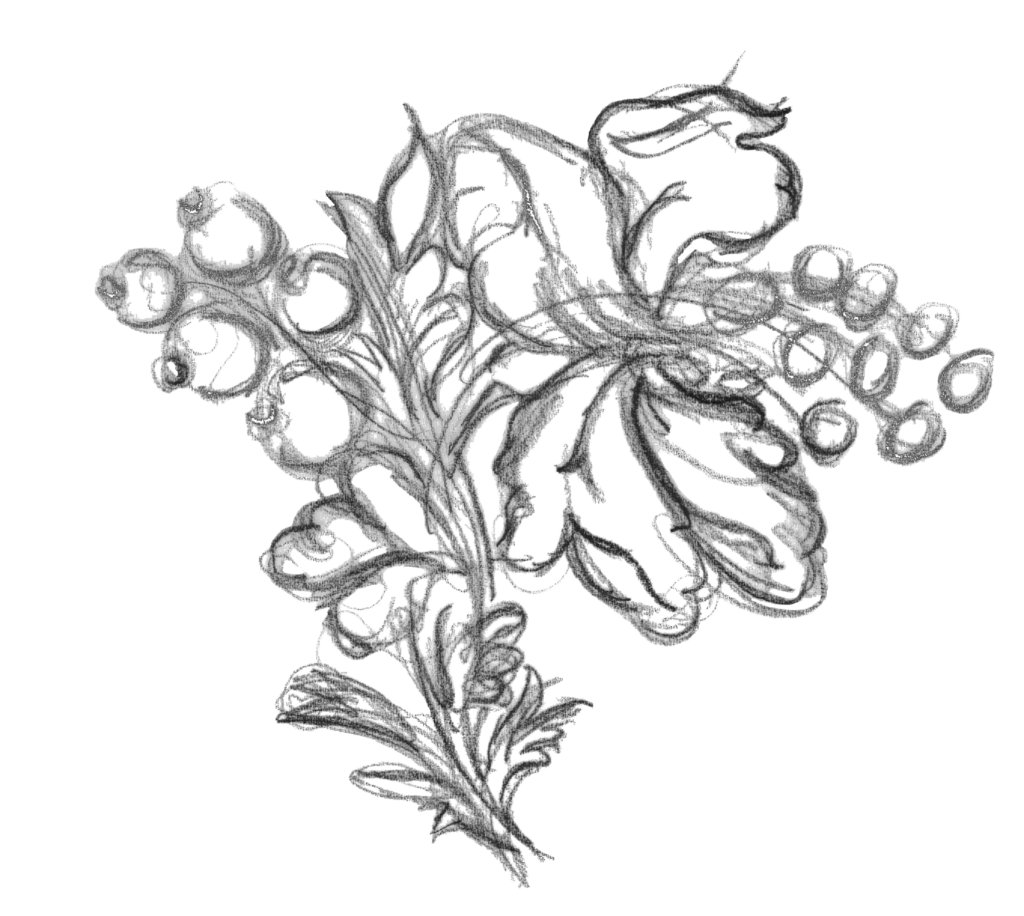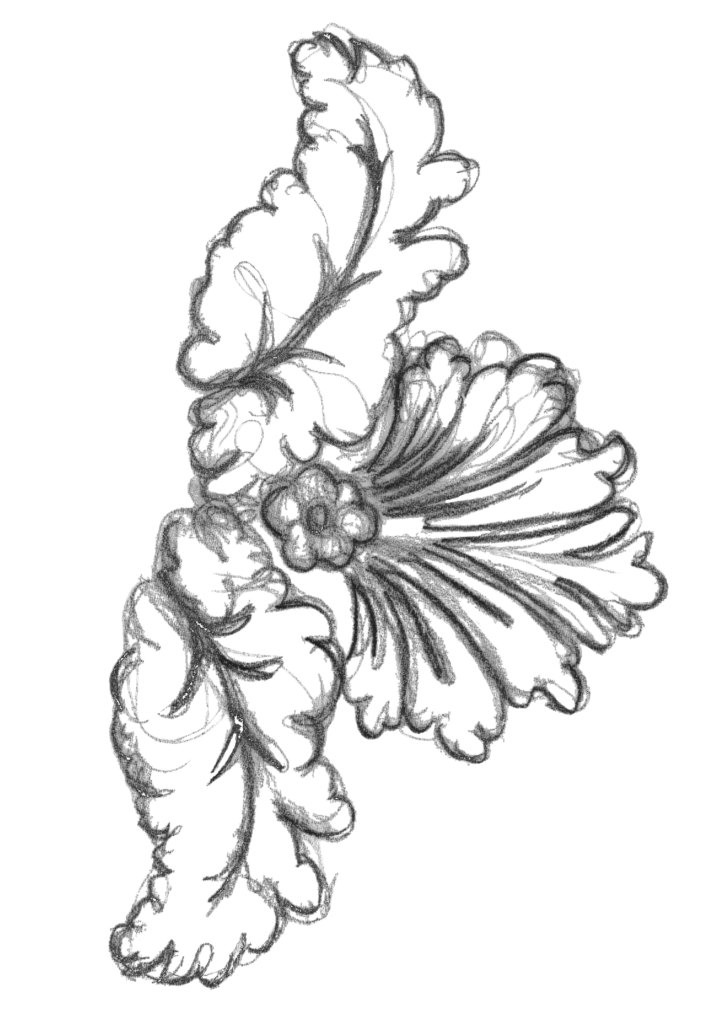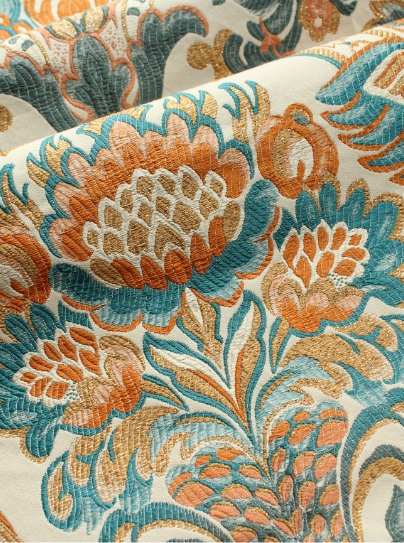The Great Beds of Humphries – Part 1
Almost from the beginning, Humphries Weaving has woven cloths for beds in important places which have required specialist weaving skills to restore them to their former glory. Here we bring together a vast array of cloths woven for Great Beds that can be seen in museum collections, palaces and houses.
We start with the oldest bed to be reupholstered in our silk, at a time when the four poster bed was a popular choice to hide away from the cold draughty nights to keep warm.
The V&A Museum British Galleries Exhibition
The Great Bed of Ware
When the Victoria and Albert Museum included this huge bed in the “British Galleries” it was said to be one of the museum’s most remarkable objects on display. Carved in solid oak, the bed reflects the fashion of time in 1590’s. The bed has had a lot of publicity, mainly due to its size, it is big enough to hold four people. The bed was originally housed at an inn at Ware, about a day’s horse ride from London towards the north of England. In July 2000 the Museum decided to restore the bed to its former glory to give some idea of how it may have been dressed and used. The bed drapes are made of wool and the bed covers, of which we were involved in restoring, are made of plain silk lute.
Dr Charles Kightly was the appointed Historic Interiors and exhibitions consultant and was charged with the new presentation of the bed. The difficulty with the brief was that the colour required was to be achieved using natural dyestuffs and not the modern mineral dyes commonly used today. The silk was to be of a ‘shot effect’ with an olive green weft across a carnation warp in a lute plain of 30 inches wide. This width was known as “broad loom” at the time of the bed manufacture and would have been seen as a very luxurious coverlet, due to the extra costs in weaving a wide width of cloth. Trials were woven and the shade was agreed. The cover measured 108 inches square and was hand stitched in green silk embroidery thread, also made at deVere Mill. This is the only time the business used vegetable dyestuff to achieve a colour as it was ten times the expense of normal dyes and very time consuming for the colourist.
Hampton Court Palace
King William III State and Private Beds
One of the oldest and greatest of beds in any Historic Royal Palace must be the State Bed of William III. The bed dates to around 1695 and was adorned with the most expensive of cloths – plain crimson hand cut silk velvet. The original colour on the bed had long faded away but miraculously a piece of the same velvet was found loose-covered on a court stool from the same room. This cover confirmed the structure and a straw coloured warp and weft with the figure warp pile in a deep crimson red. This bed at Hampton Court Palace was originally furnished in crimson hand cut plain silk velvet and rich decorations including Ostrich plumes and a considerable amount of gold lace. Our requirement was to begin with the velvet which would be a length of eighty metres, taking almost a year to weave. Being the last company to hand cut silk velvet in the country we took a look at the last remaining fragments on the stool coverlet. There beneath all the over stuffing lay the beautiful crimson velvet which was once in the royal bedchamber.
Close examination of the velvet structure revealed an interesting detail in that the raw silk ground was in a pale golden tone matched to the weft of souple silk. This was most interesting, for most of our knowledge the Royal velvets used a black ground to intensify the depth of tone. Here with the lighter ground structure the pile would allow the gold tone to lighten the crimson and when draped, expose the gold beneath the pile. It was decided to copy the structure and colour combination exactly. The linings of the bed were of pure silk satin were which was also used on the bed coverlet before being adorned with gold lace decorations.
With such a large and luxurious bed decorated with the most expensive and costly fabrics it was then fitted with case covers. These were a set of plain lustring bed drapes that went around the whole of the decorative exterior of the bed to protect it from dust, dirt and light penetration in the room. They were suspended on a rail and could be drawn back when the King required the bed. The king would reside in or on the State Bed whilst attending to business. His sleeping however took place in a smaller, more intimate room where he need not have been disturbed. This relatively small four poster bed is clothed in yellow damask and lute case covers.
Burghley House Stamford Lincolnshire
The Elizabethan State Bed
Below is an image of the Elizabethan State Bed taken from the London News. The image shows the bed, originally for Elizabeth 1st although she never slept at the house, with decoration of floral images embroidered on the outer surfaces of the bed drapes. By 1986 these bed drapes had rotted away and the embroidery was too fragile to re-apply to new green silk velvet ground cloth.
However, the bed was an important display at the house and needed to be retained. We were asked to supply a cloth to substitute the velvet whilst retaining the original tester and head board. All worsted camlet was used as it was in keeping with the bed period and did not detract from the finesse of the other original work still in place. The colour was originally going to be a shot effect and trials were woven to try and reflect the two tones of the silk velvet. When placed alongside the original velvet it was decided that the solid shade looked best and so was subsequently used in the restoration.
Aston Hall Birmingham
The Wroxton Bed
Wroxton Abbey was а Jacobean house in Oxfordshire, with а 1727 garden. It is here that the Wroxton bed originated, however it now resides at Aston Hall, Birmingham. The four poster bed features pure silk drapes and linings and shares the damask pattern of Italian origins with other beds of the same time. The design was said to be a favourite of King William’s and can be seen in most of the Royal Palaces to this day. The remaining silk fragments from this bed were pieced together and the design was redrawn to keep the pattern shapes correct.
The drapes were originally in crimson with a deep golden weft thread, the best colour of which was hidden in the selvedge of the broken fragments. The design elements differ to those at Hampton Court Palace although it is the same pattern. The bed shows the elaborate style of the late 17th Century but the two colour damask is more unusual for this period.








